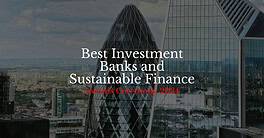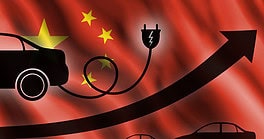Global banking aced 2023 despite the drama of bank failures.
The banking industry emerged triumphant in 2023, a year that had threatened to be catastrophic. Rapid industry intervention averted the nightmare scenario of a contagion-driven financial crisis fueled by multiple bank failures in the US and Europe.
Last year’s mini-crisis of bank failures was best seen as the result of idiosyncratic management lassitude at the eventually rescued banks. However, the exposed risks inherent in app-based banking and the potential for bank collapse based on rapid mass deposit withdrawals provided a wake-up call for the industry, most pointedly among the rapidly proliferating neobank challengers.
As a result, boosting the current account savings account ratio and improving the “stickiness” of deposits became a central focus for bank CEOs last year.
As in 2022, the net interest margin (NIM) environment was optimal due to tight central bank monetary policy. Last year, a long-absent dynamic entered the fray: positive return on equity, which reemerged after being negative or flat in the 15 years since the global financial crisis of 2007-2009 and averaged 9% last year.
Bank profits in the Asia-Pacific region soared, with many lenders scoring record high net income—even in sclerotic Japan, where the 12-year battle fought by the banking sector against negative interest rates would seem to be ending as that easy money regime draws to a close. China was a notable absentee from the party: A fraught property sector shredded sentiment.
Last year, the global banking industry showed greater cost efficiency and improved asset quality. Still, the direction of travel will be determined by economic growth; central bank base rate moves, particularly from the US Federal Reserve; the demand for credit; and the pace of loan delinquency.
As the cost of capital came into focus and banks looked to shrink cost-to-income (CTI) ratios, the industry shed 60,000 jobs globally last year, the highest tally since the crisis. Investment banking fee wallets collapsed as deal-making and listings shriveled.
At the same time, traditional bank lending faced the threat of a thriving private credit market engineered by the nonbank financial sector. Leveraged buyout funds were more likely to be supplied by a large hedge fund than a big bank and at more competitive rates.
Environmental, social, and governance (ESG) issues remained a dominant theme: in Europe as a total belt-and-suspenders operational input thanks to the tightening of the regulatory straitjacket, and in Asia as companies and banks played catch-up in the sustainability game during the start of an ESG-focused regulatory convergence manifesting in the region.
Sustainable finance dominates across the financing spectrum globally, whether in transition format, which dominates in Japan, or the full-on green/impact issuance typical in Europe and the US and burgeoning in Asia-Pacific, excluding Japan.
In Europe, banks had their most profitable year on record, thanks to the NIM effect, resilient asset quality, and low CTI ratios. Bank for International Settlements capital-requirement metrics were in rude health, with more capital returned to bank shareholders last year than at any other time since the crisis.
Methodology
With input from industry analysts, corporate executives, and technology experts, Global Finance editors select the winners for the Best Bank awards using the information provided in entries and independent research based on objective and subjective factors. It is unnecessary to enter to win, but materials supplied in an entry can increase the chance of success. Entrants may provide details that are not publicly available.
Judgments are based on performance from January 1 to December 31, 2023. Then, we apply an algorithm to shorten the list of contenders and arrive at a numerical score, with 100 equivalent to perfection. The algorithm incorporates criteria weighted for relative importance, including knowledge of local conditions and customers, financial strength and safety, strategic relationships, capital investment, and innovation in products and services.
Once we have narrowed the field, our final criteria include the scope of global coverage, staff size, customer service, risk management, range of products and services, execution skills, and intelligent use of technology. In the case of a tie, our bias leans toward a local provider rather than a global institution. We also tend to favor privately owned banks over government-owned institutions. The winners are those banks that best serve the specialized needs of corporations as they engage in global business. The winners are not always the biggest but the best: those with qualities companies should look for when choosing a provider.




